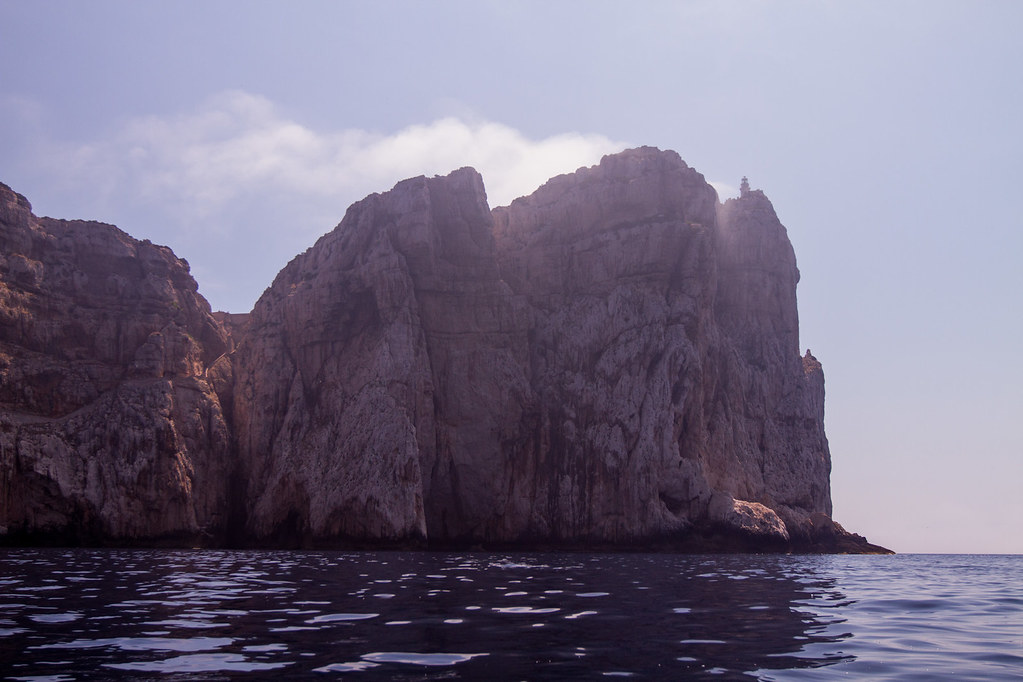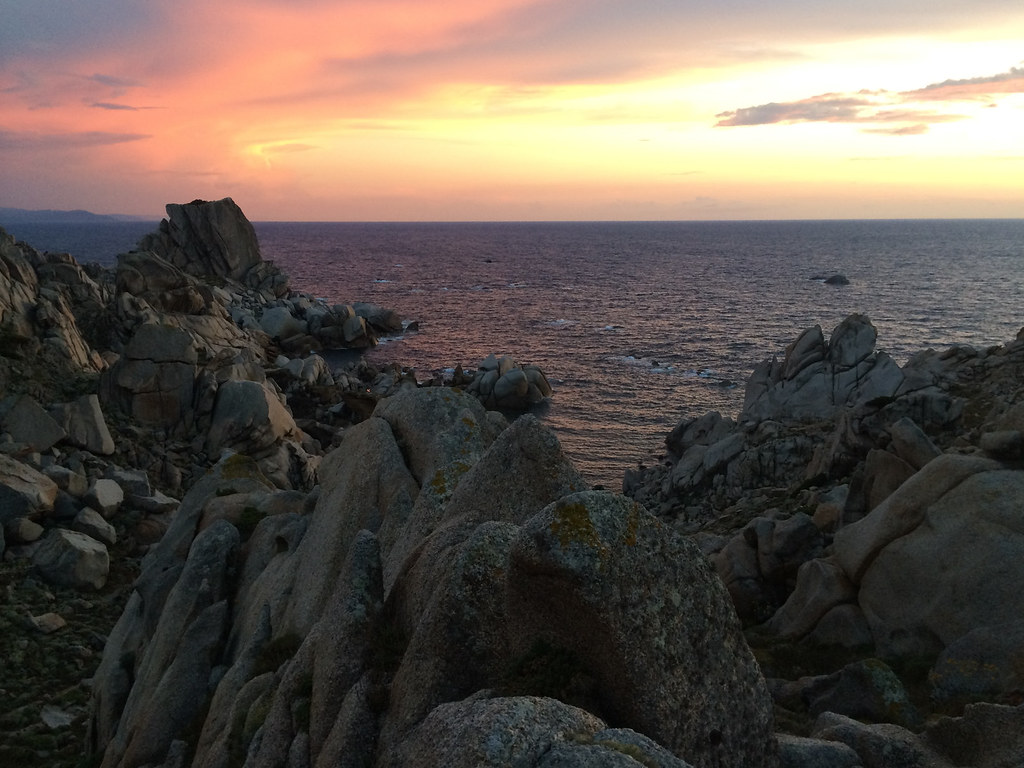Kayaking in Sardinia
We were lucky enough to have not one but two kayak sojourns in Sardinia (actually Sardegna) during a three-week visit there in the summer of 2014. One journey was pretty cushy and guided in the northwest and one self-supported camping in the east. In short: Sardo is awesome and everyone should paddle there, dammit.
Sardinia, an island region of Italy that is smack-dab in the middle of the Mediterranean Sea, is a fascinating place: Occupied and conquered by pretty much every civilization that’s ever touched the edge of the Med, it has a history of inhabitation that goes back to the Stone Age, has vibrant and amazing ruins from very sophisticated Bronze Age civilizations, has unbelievable food (in quality and quantity), and has a sturdy, independent spirit that I respect a lot.
Yeah, yeah, yeah. I know. What was it like to kayak there? Well, Nancy Soares beat me to the punch a year ago with her own trip report on the Tsunami Rangers website, so I’ll spare you the blow-by-blow of the trip. I have a Flickr album that does that anyway. Instead, I’ll focus on what’s interesting, cool, and challenging about Sardinia in general, from a sea kayaker’s perspective.
Because, seriously, you need to paddle there.
Sardinia Rocks.
The coastline of Sardinia is fascinating. Some stretches are limestone, some are sandstone, some are pink granite, some white granite…all rock types that are easily sculpted by wind and wave. It makes for some really stunning destinations and scenery for the paddler.

In fact, the northern coast’s pink granite coastline forms amazing rockgardening/rock hopping opportunities. A week there with some Delphins, Fusions, or Karma RG’s would be richly rewarded…with one caveat. With little ocean swell (see below), there isn’t a lot of dynamism unless the Mistral is really howling. Then things get intense/interesting. But there are rooms, passages, slots, and more waiting to be aggressively explored by the adrenaline seeker. The northern areas north of Isola Rossa have the most sculpted, navigable, runnable rock groups. The peninsula east of Fertilia has massive, imposing cliffs and headlands worth exploring. I’d love to explore again in more challenging conditions.

Towns are common, but some stretches along Gallura can be pretty sparsely populated, and there isn’t any road access to the eastern coast for dozens of miles. There aren’t that many tourist boats on the water, but there are plenty of resorts on the water’s edge. Use judgement when approaching a beach with a resort on it. It helps to do so with someone who knows the area. Speaking of which, we were guided in the north by the ever-awesome Claudio of Sardinian Discovery, and that leg of the trip was produced, planned, and arranged by the amazing Barbara Kossy. We ate so much we barely fit into our kayak cockpits.
Caves Galore.

There are many grottos and caves along the coast, of various sizes. We’re spoiled by living in Northern California with sea caves riddling our paddling destinations, from San Francisco to Mendocino. But even so, I’d not been in caves like these: So many shapes and sizes, the majority of which were truly massive. As in “go in bow first without a helmet” massive, which is the opposite of how one enters a cave that opens in to the Pacific Ocean. The longest straight stretch of sea cave I’ve ever paddled was on this trip.

The east coast is where the cave situation goes off the hook. Camping must be done stealth/ninja style, and in return for being sly you’d better adhere to strict Leave No Trace camping ethics. Land after all the tourist boats leave (about 6-7pm), and leave after they re-appear in the morning (about 8-9am) and you should have no problem. Don’t be a weirdo and camp in an obvious place in plain sight on a beach, and no fires. Heck, the local food is so great that we just ate no-cook meals of ham, cheese, tuna, and Sardinian flatbreads, and even that was awesome. All campsites are without water or facilities…except Cala Sistine, which has a place up the wash where you can have a pretty darned civilized breakfast and espresso. Just don’t show up until the first tourist boats arrive in the morning. As is usual, buy something if you want to use the restroom, there or anywhere in Sardinia.

You can rent kayaks in Cala Gonone for day trips, but the really sweet places are midway through an area without roads, about 35km equidistant from Bari Sardo in the south to Cala Gonone in the north. For that, you need to rent gear or have a guide. We had enough kayaking skills to go it solo with some rentals from Francesco at Cardedu Kayak, who went the extra mile with a scenic and informative shuttle back to our car and a great evening of food and drink.
Wind and Water.
Sardinia is far better known as a windsurfing destination than a kayaking destination, due to two legendary winds: The Mistral and Sirocco. The Mistral blows generally from the north and generates intense winds on the west and north; woe be to the kayaker trying to head east through the narrow channel that separates Sardinia and Corsica when that thing gets honkin’. The Sirocco blows from the south, bringing heavy and hot winds with huge amounts of windborne dust from Africa. We experienced this ourselves. Being outside was like being in a blow dryer: 30 knot winds and 104° F.
For all these winds, there isn’t much open-water swell to speak of, not like in the Pacific Ocean. Wave periods were between four and six seconds…paltry by Pacific standards, lacking in punch. We had a ton of days with nearly calm winds and almost glassy seas. Plus, if the wind is blowing hard one day, the whole island can be crossed in a few hours, so it’s not that hard to find an alternate put-in.
The water around Sardinia in the shoulder seasons is still around 70° F, making for very comfortable paddling in light clothing. We wore rashguards, long sleeve shirts, and Kokatat NeoCore shorts, and that worked great. Adding a neoprene jacket made snorkeling for long periods perfectly comfortable.
The water in the Mediterranean is legendary for its clarity. Really clear water can be due to heavy particulates on the ocean floor (i.e., sand and not silt) and a lack of living organic material like phytoplankton. The local rock, lack of coral, and consistency of semi-boring sea life suggests that both of these factors are present (I’m no marine biologist). There are lots of small fish everywhere, but it’s not a snorkeling destination like Hawai’i or Thailand. But white sand beneath clear skies makes for gorgeous turquoise waters.
No Americans.
Well, OK, I’m exaggerating, but Sardinia really is off the radar of American tourists. (The most common response I got to telling friends that I was going to Sardinia was, “Why?”) Germans, Swedes, Australians, and Italians all flock there for its amazing climate, scenery, and food. We saw very, very few other Americans on our trip, which was nice. A note on language: It’s pretty easy to get by in major seaside towns without knowing Italian, but go to smaller seaside towns and in the interior, and you’d better know your Italian. Many Sardinians speak excellent German, so that’s another option.
About Getting Around…
A few notes about getting around if you drive or spend time inland in Sardinia:
- Maps may contain that things that the government intended to do, but never did. For example, there is no national park in the Gorropu area. Some maps show dozens of provinces, when there are actually less than ten. Signage and maps changed before either political will faded or the money ran out.
- Stop signs are in English – they actually say stop — and I think that’s why Sardinians literally, completely ignore them.
- Speed limits are oddly low except for a few major highways…which everyone ignores anyway.
- If you’re an American, be sure to get a “chip-and-PIN” credit card. Cards of other types simply will not work. Many normal debit cards don’t work in many bancomats.
- If you can’t drive a manual transmission car, arrange to rent an automatic way, way, way in advance. Rent online from Thrifty, pick up locally from AutoEuropa.
And That’s Not All.
We didn’t circumnavigate. We didn’t paddle the supposedly beautiful southwestern edge. We didn’t get to mix it up in performance boats in tough conditions. There’s still so much yet to see and experience…but regardless, we got a good introduction, and would go again someday if the opportunity arose. The Sardinians are great: Enthuastic, emphatic, and will ply you with some of the best meals you’ve ever had.
And they make actually tasty grappa, and the amazing Mirto liqueur, flavored with myrtle berries. Normal house wines were better than most spendy wines one finds here in the US. I only found one dark beer, but it was amazing. Who’s up for a booze tour via kayak?
Highly recommended.



Nice post, Nathan. It was interesting to read about what it’s like to cruise around the less inhabited part of the island. And thanks for the pingback!